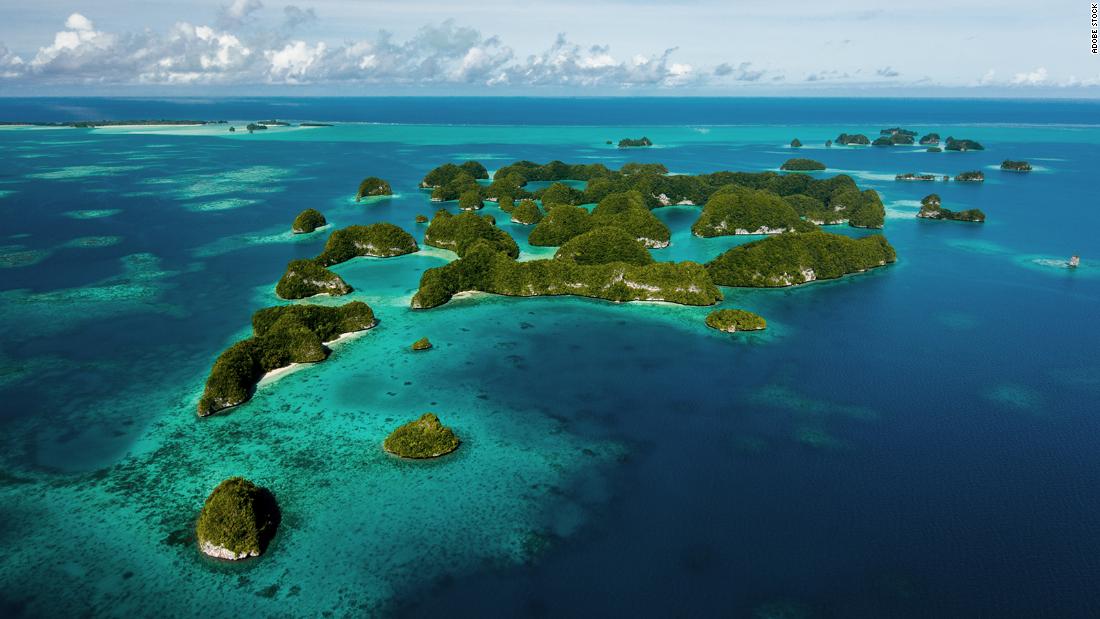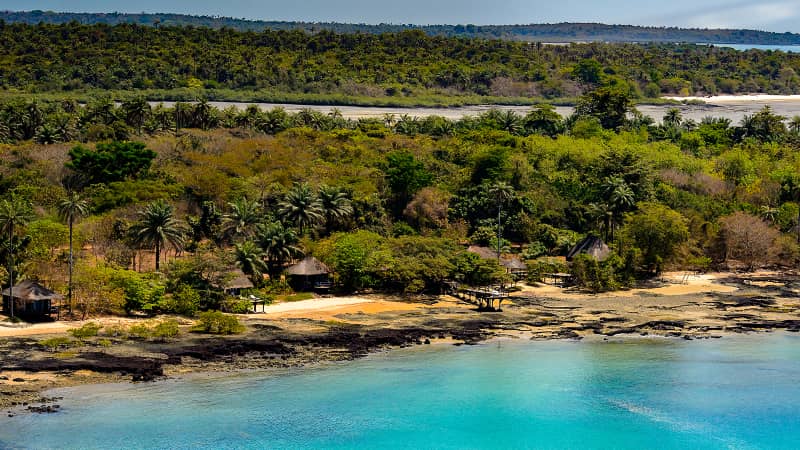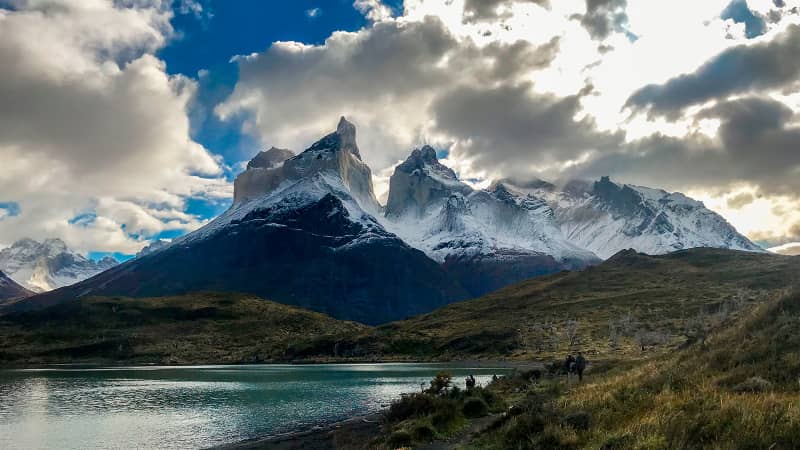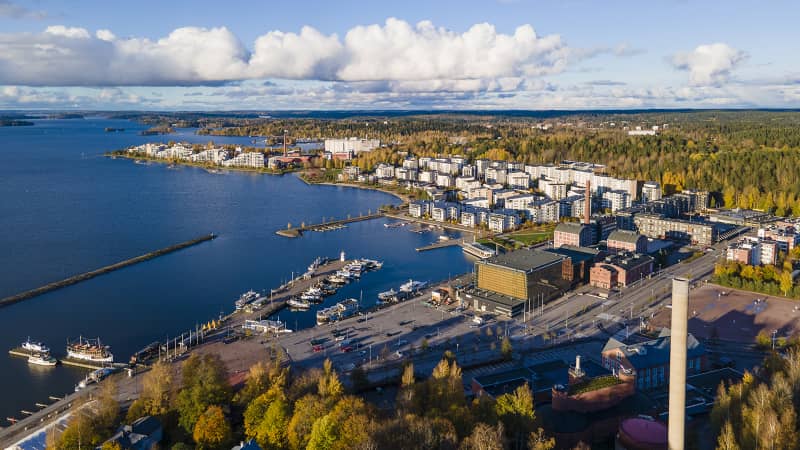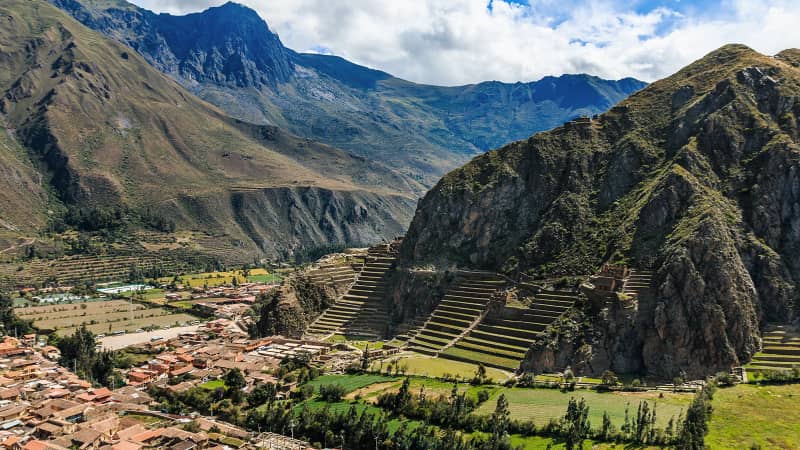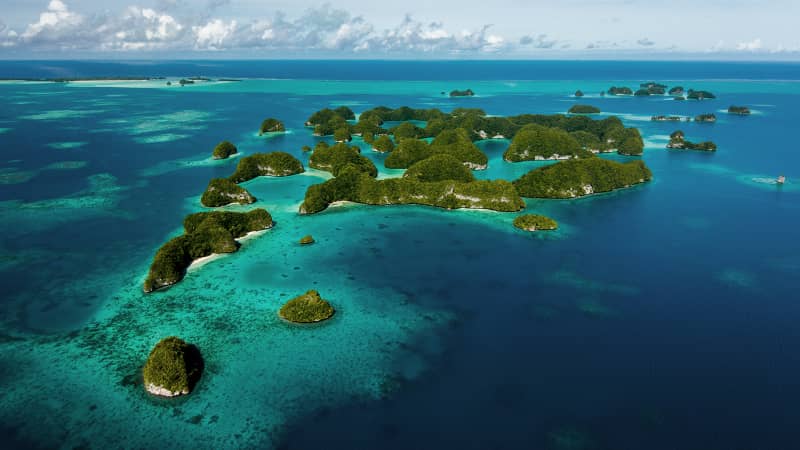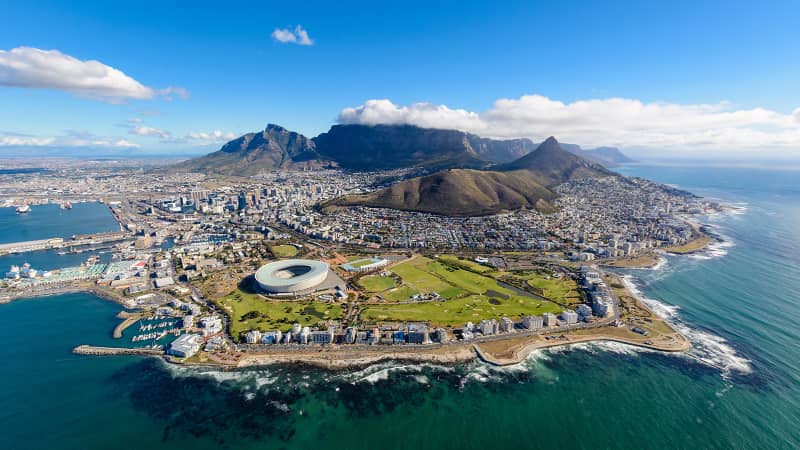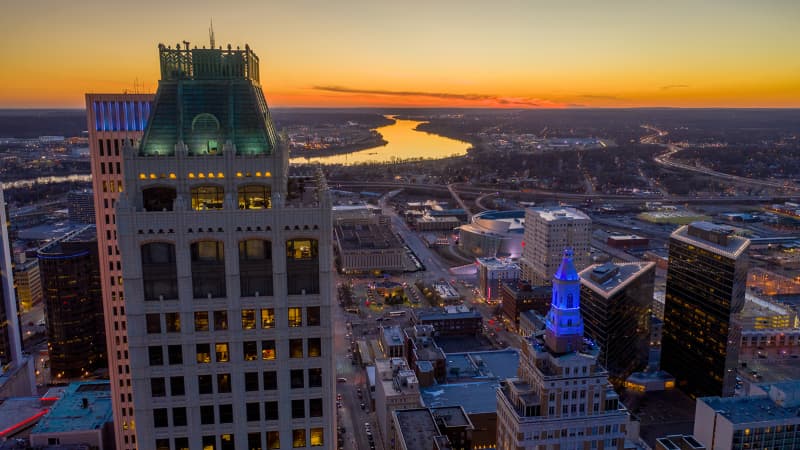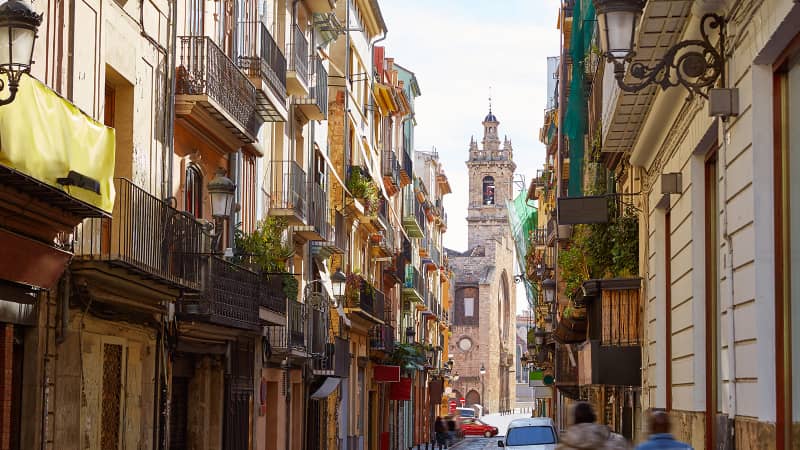(CNN) — Travel is more challenging now than it has been in a long time. Borders tentatively reopen only to slam shut again. A once-simple visa on entry is replaced with piles of paperwork. And the whole world is brushing up on the Greek alphabet whenever a new variant makes headlines.
Still, though, amid all the darkness that has defined the pandemic, there are some glimmers of hope.
Perhaps the lesson travelers can take into 2022 is that exploring the world is a privilege, not a right. This year’s crop of dream places to visit reflect that mindset — from national parks to remote islands to lesser visited spots, mindfulness and respect for the Earth are part of the journey.
When Orville and Wilbur Wright first got their small plane aloft in 1903, it seems unlikely they would have imagined a world of scores of jetliners a day connecting the world’s great cities or an eyeball scan replacing a paper passport.
When we look back on how far we’ve come, it makes us more grateful for where we are.
Let’s all try to channel a sense of wonder if and when we’re able to travel in 2022 and beyond.
ANTIGUA AND BARBUDA
Not only is the twin-island nation blessed with miles and miles of pristine white and pink sands — Antigua famously has a beach for every day of the year — its also lays claims to the longest running Sunday party in the Caribbean, which takes place at restored military lookout Shirley Heights.
Barbuda, the smaller of the two islands, was famously one of Princess Diana’s favorite vacation spots, while veteran actor Robert De Niro co-owns a resort in the area with Australian billionaire James Packer.
Cricket is a massive deal here, so the England Tests, which are being held in Antigua in 2022, are one of the most anticipated events of the year. The official test match between England and the West Indies will take place at the stadium named after Antiguan cricketing legend Vivian Richards in March.
Antigua and Barbuda has been gaining recognition for its sustainability efforts in recent years thanks to a number of successful green initiatives. Single-use plastics are banned, while the “Green Corridor,” a collection of environmentally friendly hotels, resorts and businesses has been established across the southwest coast of Antigua. — Tamara Hardingham-Gill
BISSAGOS ISLANDS, GUINEA-BISSAU
Made up of 88 islands, of which just 23 are inhabited, this magical archipelago situated around 48 kilometers off the Guinea coast of western Africa is as unique as it gets.
The Bissagos Islands are run by a matriarchal society where women possess all the power. Here women choose their husbands, propose marriage, build their own homes and run the households.
The few tourists who are able to visit the UNESCO Biosphere Reserve are rewarded with immaculate beaches, expansive natural parks and calm blue waters.
The cluster of islands, which can be accessed by boat, ferry or light aircraft, also holds an extraordinary abundance of wildlife, including protected or rare species like the Nile crocodile, the common bottlenose dolphin and the African manatee, as well as about 500 species of birds.
Hurtigruten Expeditions, the company that founded expedition cruising in 1896, has added its first-ever African adventure to its 2022/23 lineup, with the Bissagos Islands among the list of destinations on the itinerary. — THG
CAPE BRETON, NOVA SCOTIA
Connected to the Canadian mainland by a mile-long causeway, Nova Scotia’s Cape Breton Island is famed for its scenic vistas and historic sites.
Spread over 10,311 square kilometers, it’s no tiny dot in the ocean, either.
Why go now? In recent years, Canada has taken important steps to develop and promote indigenous tourism and Cape Breton is no exception. Visitors can immerse themselves in traditions of Cape Breton’s Mi’kmaq — a First Nations people who have lived in Canada’s eastern Maritime region for over 10,000 years — through a variety of offerings from the island’s five First Nations communities. — Karla Cripps
CHILE
A long, thin strip between the Pacific Ocean and the Andes Mountains, Chile is a world leader in ecotourism and an outdoor adventurer’s paradise.
In northern Chile, the Atacama is the place to go. Valle de la Luna features otherworldly landscapes, rock formations and surreal, colorful sunsets. Speaking of color, see vivid pink flamingos at Chaxa Lagoon. Both are located within Los Flamencos National Reserve.
Want something even wilder? Then head farther south to the Patagonian wilderness. Torres del Paine National Park is considered one of the crown jewels of Chile’s park system. Its glaciers, waterfalls and wildlife are renowned.
The United Nations World Tourism Organization named two Chilean places in its list of “Best Tourism Villages” in 2021, which promotes sustainable development. They are Pica, known for its citrus fruits and hot springs, and Puerto Williams, the southernmost city in world.
2022 will mark 300 years since the Dutch arrival to the South Pacific island of Rapa Nui (AKA Easter Island). Famed for its giant stone faces, this special territory of Chile has been closed to visitors during the pandemic. But it’s set to reopen to tourists in February. — Forrest Brown
COLOMBO
Colombo is usually misunderstood from the beginning.
Despite being Sri Lanka’s biggest city, it isn’t the capital (that would be Sri Jayewardenepura Kotte, which is a great fact to break out at your next pub quiz), and many travelers skip it over in favor of the island’s gorgeous beaches and tea farms.
Sri Lanka does have its share of delicious curries, but don’t assume that the food is the same as in neighboring India.
DIJON, FRANCE
Thought Lyon was the capital of French cuisine? Not so fast — Dijon has always been a huge foodie hub. The biggest city of the Bourgogne-Franche-Comté region is a glorious mishmash of timber-framed houses, magnificent 18th-century palaces and a soaring Gothic cathedral — but it’s also one of France’s gastronomic capitals.
Fittingly enough, May 2022 sees the opening of the Cité Internationale de la Gastronomie et du Vin in Dijon — a 70,000 square meter renovation of historic buildings from the 16th to the 18th centuries, turned into a complex devoted entirely to French food and wine.
DISKO BAY, GREENLAND
Waterfalls, remote hiking and panoramic views inspire some to call Greenland’s Disko Island the Grand Canyon of the Arctic.
Whales, colossal icebergs, a fast-moving glacier and a whole lot of dog sleds define Disko Bay, on Greenland’s western coast.
The town of Ilulissat, with its colorful houses, makes a great base for exploring, not least because it neighbors Ilulissat Icefjord. This dramatic fjord is a designated UNESCO World Heritage Site, partly because of its jaw-dropping splendor, and partly because of the scientific studies that have taken place here over the past 250 years, which helped scientists understand the impact of climate change.
The enormous icebergs that populate Ilulissat Icefjord stem from the Sermeq Kujalleq glacier — local boat trips available in Disko Bay offer a chance to marvel at the icy scenes, and encourage travelers to consider why this region is sometimes called climate change’s “Ground Zero.”
This new attraction seeks to educate visitors on the importance of the ice in the Disko Bay area, as well as champion the stories of the Inuit people — who’ve lived off land and sea in the region for thousands of years — and examine the ballooning impact of the climate crisis. The building is an attraction itself, designed by Danish architect Dorte Mandrup as a riot of glass, steel and curves that blend into the staggering landscape.
As tourism grows in Greenland, there are several airport projects in the works — including a new air hub in Ilulissat. The goal is to make it easier for international travelers to explore the beautiful country in coming years, while also dispersing visitors around the country to avoid overtourism. — Francesca Street
GABON NATIONAL PARKS
The Amazon gets more press, but the Congo Basin — sometimes called “the lung of Africa” — is the world’s second-largest rainforest and is also a precious resource under threat from deforestation. More than 10% of Gabon, on Central Africa’s Atlantic coastline, is given over to its 13 national parks — and they’re all celebrating their 20th anniversaries in 2022.
Accessible only by the Trans-Gabon railway or private plane, Ivindo — this equatorial country’s newest UNESCO World Heritage site — comprises nearly 300,000 hectares of parkland crisscrossed by blackwater rivers, featuring impressive rapids and glorious waterfalls. Its remoteness means parts of the site are still to be explored, but the creatures that make their home here include gorillas, leopards, mandrills and pangolins, as well as the critically endangered forest elephant.
Loango National Park offers big-game fishing in the estuary and at sea, while Minkébé, at 7,000 square meters, is the country’s largest. Pongara National Park has beautiful untouched beaches where leatherback turtles lay their eggs between November and March, while dolphins and humpback whales can be spotted in the dry season between July and October. — Maureen O’Hare
JORDAN
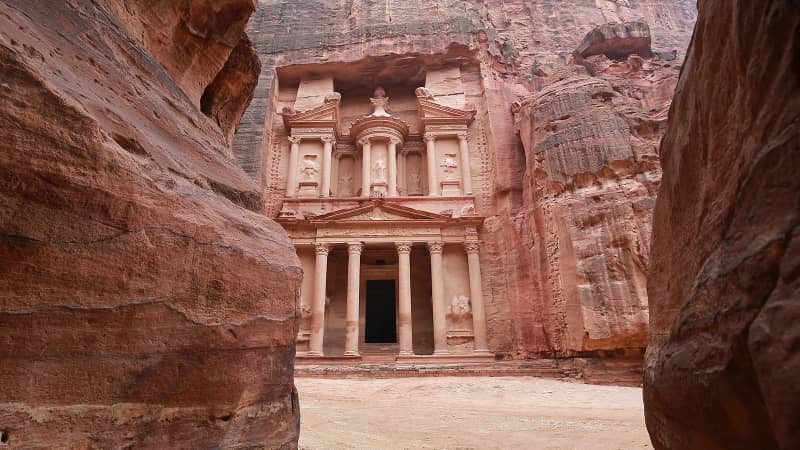
Petra was named one of the “new seven wonders of the world” in a 2007 poll, alongside Christ the Redeemer and the Great Wall.
Khalil Mazraawi/AFP/Getty Images
A few years ago, Jordan’s spectacular rock-carved ancient city of Petra was in danger of becoming a victim of its own success as the tourism industry threatened its delicate structures and lured Bedouin locals away from their traditional ways. Years of regional unrest followed by the pandemic mean Petra is now crying out for crowds.
Visitors will surely return to this gem, but there are opportunities to explore Jordan more sustainably. Other archaeological treasures, like the ruins of Jerash and Umm Qais deserve to be seen.
There’s also the vast expanse of the Wadi Rum desert, best enjoyed with Bedouin guides who can share their knowledge of working in harmony with the epic landscape. A side trip for a salty float in the Dead Sea is also still worth it, not least to observe another delicate ecosystem under assault from modern life, this time rampant water extraction. — Barry Neild
LAHTI, FINLAND
Finland is regularly ranked as the happiest place in the world, and there’s a great deal to be cheerful about when it comes to the beautiful lakeside city of Lahti.
Situated 100 kilometers northeast of Helsinki, this destination is green in every sense. Finland’s eighth-largest city is packed with beautiful forests, parks and reserves with incredible hiking trails and lookout points.
Lahti has also led the way in terms of environmental innovations, becoming the first Finnish city to be appointed as the European Green Capital after ditching coal as a source of fuel and offering its citizens free transport tickets and food as rewards for being eco-friendly.
MUNGA-THIRRI-SIMPSON DESERT, AUSTRALIA
For those who’ve always wanted to experience a once-in-a-lifetime off-road challenge in Australia’s Outback, the country’s newest — and now biggest — national park awaits.
Now here’s the challenging part: The only way to explore the Munga-Thirri-Simpson Desert National Park is with a high-clearance four-wheel drive vehicle, necessary to access its extensive network of playa lakes, stunning red dunes and bird-filled grasslands. Nights are spent camping out under the stars.
Drivers need to carry fuel, water and food reserves, as well as basic vehicle spare parts and recovery equipment, while a Desert Parks Pass is required to enter and camp in the park. In other words, self-sufficiency is key. Another important note to keep in mind when trip planning: The national park is closed from December 1 to March 15, when temperatures soar.
NAPLES, ITALY
Cut Naples and it bleeds classic Italy. Pizza was born here; Sophia Loren was raised in its cobbled streets. Ancient ruins lie beneath modern suburbs. Scooters zigzag past faded-glory palazzos, built when the southern city was its own sovereign state. Hand gestures are an art form here. And that fabled Italian friendliness? This is where it is forged.
There’s more to come: New archaeological sites are due to open in 2022 which, although under wraps for now, will shed new light on Greek and Roman Neapolis, as it was called back then. Outside the city, Pompeii is unveiling newly excavated ruins and new ideas — like the Pompeii ArteBus, which shuttles visitors around nearby, lesser known villas, for free. Offshore, island Procida will be Italy’s Capital of Culture for 2022. But really, this is Naples’ year. — JB
OLLANTAYTAMBO, PERU
A trip to one of the world’s most sought-after sightseeing spots should be about far more than the final destination. And that’s where Ollantaytambo comes in.
This well-preserved town along the route to Machu Picchu in Peru’s Sacred Valley boasts in own impressive Inca ruins and has recently been named one of the UNWTO’s “Best Tourism Villages.” The initiative recognizes places that have embraced tourism as a means to promote sustainable development and to safeguard rural villages “along with their landscapes, natural and cultural diversity, and their local values and activities.”
There’s a lot to safeguard here: An Inca fortress and temple dating to the 15th century that became the site of a rare defeat of Spanish conquistadores; a vibrant town that’s also one of the best surviving examples of Inca city planning; the Inca storehouses of Pinkuylluna overlooking Ollantaytambo; and a nearby Inca quarry that gave rise to engineering marvels.
Because Ollanta, as it’s often called, is at a lower elevation (2,792 meters or 9,160 feet) than the international arrivals gateway of Cusco (3,399 meters or 11,152 feet), it’s also a better place to acclimate to the thin air of the Andes. Other intriguing spots in the Sacred Valley, including the mysterious circular Inca ruins at Moray — thought to be an agricultural project — and the terraced Maras salt mines, are nearby.
Tourism to Peru in 2020 dropped to just 20% of 2019 arrivals, but those numbers will creep back up as the world tackles Covid-19. 2022 just might be the year to plan a good, long, meandering trip of a lifetime before visitor numbers surge again. — Marnie Hunter
ORKNEY ISLANDS, UK
Off the most northerly tip of Scotland, you’ll find the Orkney Islands, a breathtaking archipelago with cliffs and crags dotted with seabirds, seals and fascinating archaeological sites.
Orkney comprises some 70 islands, of which 20 are unoccupied. The largest, Mainland, is home to a group of UNESCO-protected Neolithic monuments dating back 5,000 years, including the chambered tomb of Maeshowe and the enigmatic standing circle, Ring of Brodgar.
Travelers can hop between the Scottish mainland and Orkney, and between the individual islands, either on ferries or via air — Orkney is home to the shortest commercial flight in the world, connecting the 1.7 miles between the islands of Westray and Papa Westray in just two minutes.
There’s also hope that electric-powered aircraft could become a chief transportation source for the islands, as summer 2021 saw Ampaire’s six-seater Cessna Skymaster aircraft undergo test flights on the archipelago. It’s a natural next step for Orkney’s islands, which are green in more ways than one — the famously windy archipelago hosts more than 500 power-generating wind turbines. — FS
OSLO
The building itself packs a punch, too. Designed by Estudio Herreros, a Madrid architectural company, it’s part of Oslo’s longterm waterfront regeneration project. Want to escape the city? Instead of the water, try heading inland. Three hours west is Rjukan, a mountain-wrapped town where “sun mirrors” on the peaks reflect light down into town during the otherwise dark winter months, and an accessible Cold War-era funicular pulls tourists deep into Mount Gausta and then up onto its peak. — JB
PALAU
In 2021, Palau had one of the world’s only successful “travel bubbles” with its fellow Pacific island of Taiwan. One of the reasons Palau has been able to pull off a small reopening to tourism is that sustainability isn’t just a priority — it is baked into everything that happens in this precarious 153-square-mile paradise.
The commitment to preserving the environment makes sense when you see how much breathtaking, diverse landscape Palau has to offer.
The island’s lone UNESCO World Heritage Site is a blockbuster: Rock Islands Southern Lagoon, an expanse of more than 400 islands which are home to some of the world’s rarest corals, as well as a range of birds, fish and sharks. — LM
PENANG, MALAYSIA
The pandemic has left many of us longing for epic culinary-focused journeys, and Penang ranks up there with Asia’s best.
This Malaysian island in the Andaman Sea offers a wide mix of traditional Malay, Chinese and Indian dishes. And then there’s Baba Nyonya — a.k.a. Peranakan — cuisine, which incorporates regional ingredients and Chinese and Malay cooking methods.
All of it can be found in hawker centers and shop houses throughout Penang’s capital, George Town, which is filled with historic buildings, from old English mansions to classical Chinese shop houses and Islamic mosques.
But there’s so much more than just food and architecture to sustain wanderlust appetites on this 295-square-mile island.
In September 2021, the popular Penang Hill was designated a UNESCO Biosphere Reserve.
Home to Penang’s highest point, it’s filled with excellent hiking trails that stretch from its peak down to the lovely botanical gardens, which were created in 1884 and serve as a repository of Penang Hill’s flora and fauna — including more than 200 species of orchids.
SOUTH AFRICA
We’ve all had a bad year. Hell, we’ve all had a bad two years. Yet it’s hard not to feel a strong surge of empathy for South Africa.
While many destinations at least benefited from summer Covid lulls to revive traveler numbers, South Africa’s November-March peak season has meant that most of its would-be visitors have been stuck at home, battling winter virus spikes.
To cap it all, in gratitude for South African scientists quickly identifying and warning about the Omicron variant, much of the rest of the world cut off all travel contact, delivering a pointless blow to the country’s already beleaguered tourism industry.
For those reasons alone, if it’s safe to visit in 2022, South Africa deserves to be near the top of anyone’s wish list. All those things that make it special — from beaches to big game safaris, wine to whale spotting, township tours to hiking trails — are all still there. And there are plenty of unexplored gems to experience if it does get busy: beach city Gqeberha, the Drakensberg mountains in KwaZulu-Natal, the scenic Panorama and Garden Route driving trails. — BN
ST EUSTATIUS, NETHERLANDS
It seems impossible there’s a Caribbean island you haven’t heard of, but St Eustatius is just that — unless you’re Dutch, as the island is a municipality of the Netherlands.
The centerpiece of “Statia,” as it is known to locals, is Quill, a dormant volcano whose sloping sides make for excellent hikes — as well as sweeping scenic views of this eight-square-mile pearl in the sea.
On top of that, it’s easier to get here than ever thanks to new ferry routes connecting the island with Saba, St Maarten and St Kitts. — LM
TULSA, OKLAHOMA
The center will house more than 100,000 cultural treasures created and owned by Dylan over seven decades. Covering his career in folk and rock, the displays will show original manuscripts, unreleased recordings and film performances, photos and more. It’s being built in Tulsa’s Arts District, close to another center devoted to Dylan hero and folk musician Woody Guthrie.
VALENCIA, SPAIN
This year, give the thronging streets of Barcelona a rest and head a few hours south along Spain’s southeastern coastline to the port city of Valencia, World Design Capital for 2022.
Home to a population of around 800,000, it’s Spain’s third-largest city and it aims to be an emission-neutral destination by 2025.
Valencia is the birthplace of paella, and you’ll find the iconic Spanish dish for sale everywhere. For fine dining, local chef Ricard Camarena’s eponymous restaurant has been awarded two Michelin stars, one of which is a green star for sustainability — the first eatery in the city to be awarded the honor.
YELLOWSTONE NATIONAL PARK
And in 2022, Yellowstone will mark 150 years as a national park. Originally slated to be a state park, Yellowstone earned its national park status in 1872 because the land it stretched across was part of three territories, none of which was yet a state. Today’s park — 96% in Wyoming, 3% in Montana and 1% in Idaho — encompasses 2.2 million acres.
That’s a lot to discover. Its hydrothermal features alone number some 10,000. Grand Prismatic Spring at Midway Geyser Basin is a stunner with bright rings of orange, yellow and green rimming its deep blue center, and of course watching Old Faithful erupt is a Yellowstone tradition.
Add encounters with formidable wildlife — keep your distance, please — and you’ve got an incredible crowd-pleaser with visitor numbers to match. (More than a million people visited the park in July 2021, the busiest month in the park’s history.)
Getting to top natural attractions early in the morning or later in the afternoon and visiting in the spring and fall can mean fewer people.
The park plans to celebrate 150 Years of Yellowstone with a series of activities, concentrated from March to August, that highlight the land’s tribal connections, examine successes and challenges in its ecosystems and look to the future. An emphasis on stewardship and visiting responsibly will encourage visitors to do their part to help protect the park for generations to come. — MH
